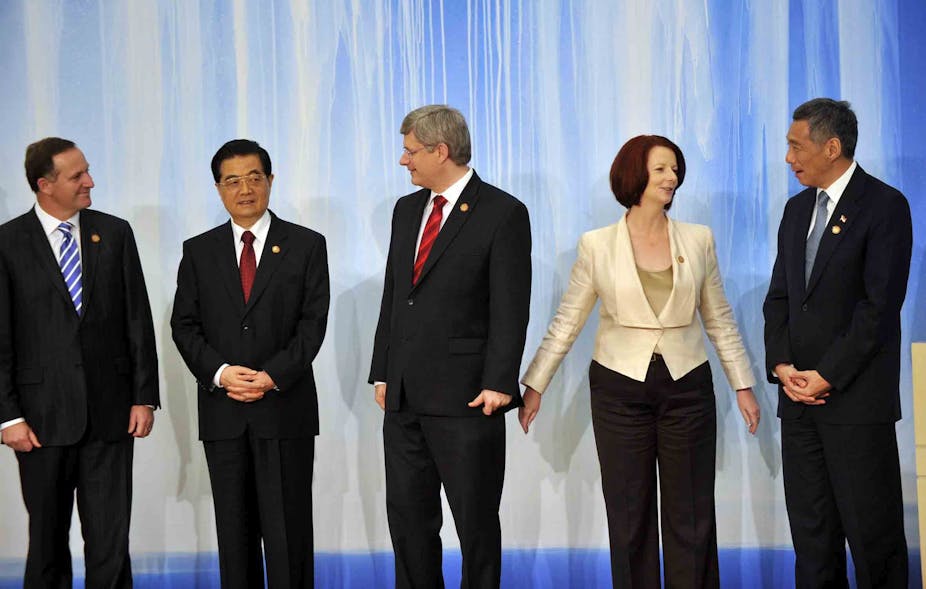Australia’s future is clearly linked to the dynamism of North Asia and Indonesia, Vietnam and other economies in the region. Yet many significant challenges confront Australia in realising the promised prosperity.
With the relative decline in the economic power of the United States and Europe, and the recognition that the 21st Century is the “Asian century”, regional economic, social and strategic structures are at the forefront of policy thinking globally – and certainly in Australia.
The rise of Asia, and in particular China, places significant obligations and responsibilities on governments and businesses. How China pursues its domestic reform agenda as it moves from an export-dominated economic plan towards promoting domestic investment and growth will be central to regional and global stability.
Exchange-rate values remains as a most vexed issue and the role China plays in moving to a more realistic appreciation of its currency will be important to righting major global imbalances.
Similarly, the gridlock in the US political system in reaching agreement on the medium, longer-term resolution of the US debt resolution will be a vital ingredient in restoring sustained global economic activity.
Where, exactly, will the tensions between China and the US be resolved? Existing forums, such as G-20, the IMF and APEC, may well be too disparate to reach serious resolution of major challenges. A real resolution may well reside in within bilateral structures now in play between the two governments.
The resolution of tensions in China’s overseas investment policies and its interest in acquiring broader and deeper assets in Australia are likely to require more effort by both countries in understanding their respective objectives.
With the demise of the World Trade Organisation’s Doha Round of free trade negotiations, it is imperative that other initiatives to promote open trade and investment flows be pursued.
Australian initiatives to this end were well received in the recent APEC Leaders’ talks in Honolulu, with the promise of progress in talks on the Trans Pacific Partnership (TPP).
However, a serious question is whether adding new economies to the TPP’s list of interested economies will make the job of arriving at an ambitious and comprehensive agreement more difficult to achieve.
While there is some cautious optimism that the European debt crisis will impel the Europeans to greater fiscal coordination and that the European Central Bank will find ways to support Italy and others, the adjustment in Europe will be protracted and will slow growth for at least the next two or three years.
The future of the Euro as a common currency remains in a fragile state at this time. If adjustments to the debt crisis in some countries can be achieved, the impact on global activity will be offset by growth in emerging markets, particularly in Asia. However, until resolutions become clearer, financial markets and investment growth will be volatile.
Australia should be generally immune from a slowdown in Europe, providing the crisis does not descend into a second round global financial and liquidity crisis.
This is due to more than just the “lucky country” syndrome, although strong minerals and commodity prices and strong terms of trade and proximity to major markets in Asia will play an important role in our medium term future.
The benefits from Australia’s mining sector are broadly spread within the community but the impact of the mining boom has created a two-speed economy, and concerns about the rising Australian dollar on some manufacturing and services sectors.
Some exporters into Australia are not playing by the rules of the game, and anti-dumping policies are matters of concern for the trade union movement and to the manufacturing sector.
Transparency in China’s pricing structures, for example, in the pricing of power, will be relevant to improving trade and economic relationships between China and its trading partners.
For Australia, policies aimed at building on the gains that have been generated from domestic reforms to promote open trade and investment in the region and globally will be vital to our future prosperity.
Above all is the need to maintain and increase competitiveness and productivity growth and to share the gains across the community. Success will be central to the realisation of the opportunities, which the 21st Asian century offers.
The Asia-Pacific Economic Cooperation (APEC) Study Centre recently hosted a conference called “Is Australian Managing?”.

